The suburb of Lytton was named in honour of Sir Edward Bulwer Lytton, Secretary of State for the Colonies in the British government. Bulwer Island is also named for Sir Edward Lytton.
The area first became known to Europeans when the three famous cedar cutters, Pamphlet, Finnegan and Parsons were blown off course on a voyage from Sydney in 1823. They were wrecked on Moreton island and, with the help of local Aborigines, explored the coast and inland until they met up with and were rescued by John Oxley’s party. They followed an Aboriginal path, probably the present Tingal Road to the top of Lytton Hill, thereby becoming the first Europeans to see the Brisbane River.
Some early settlers, residents and businesses in the Lytton area include:
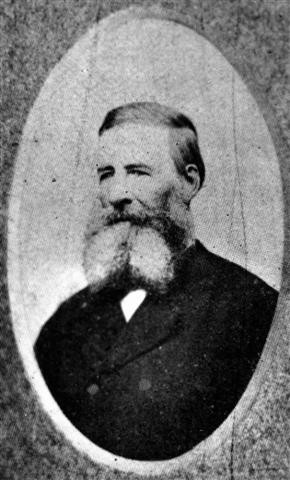
Portrait of Joshua Jeays. Image number 109863.
- William Mills who is said to have opened the first store.
- Joshua Jeays (1860).
- Edward Tuffnell who was the first Anglican Archbishop of Brisbane.
- James Wassell (1867). Wassell became a policeman and was appointed officer-in-charge and Inspector at Lytton.
- Lytton was the terminal airport for the first commercial passenger services between Brisbane and Sydney (1930). These services were inaugurated by Australian National Airways, which was operated by three of Australia’s most famous airmen, Sir Charles Kingsford Smith, Charles Ulm and G.H. (Scotty) Allen
Locations, sites, buildings (cont.) - a system was put in place, from 1885-1908, to mine the river as a defence strategy.
- Lytton Hill, previously known as Signal Hill as well as Reformatory Hill.
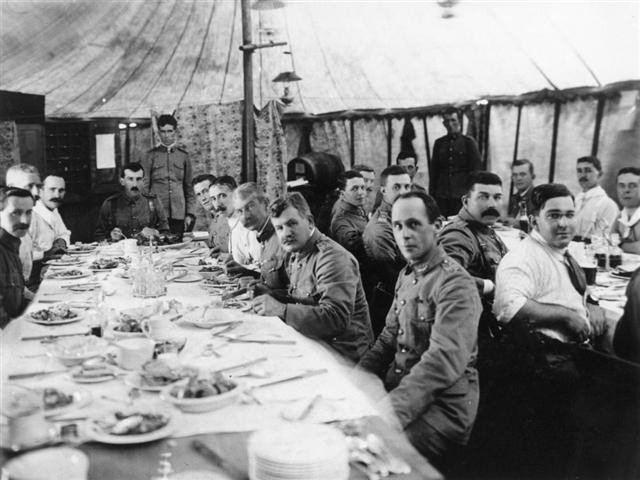
Inside the officer’s mess tent at Lytton, Brisbane, Queensland. Image number 161988.
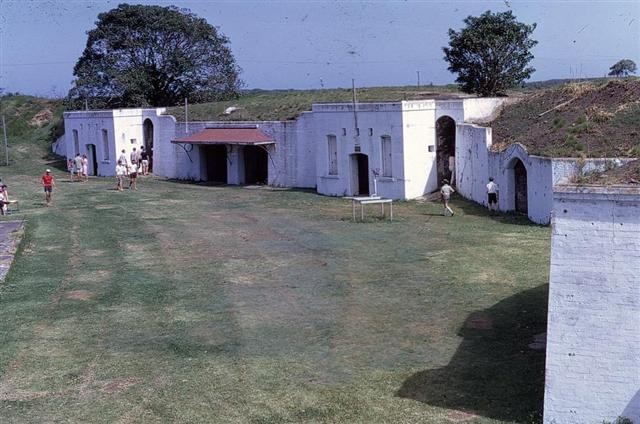
Ruins of Fort Lytton, Fort Lytton National Park, Brisbane. Image number Image number: lbp00220.
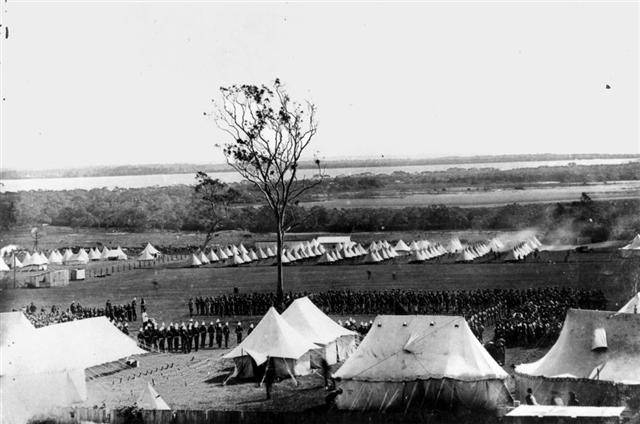
Aerial view of the military camp at Lytton, near the mouth of the Brisbane River. Image number 6149.
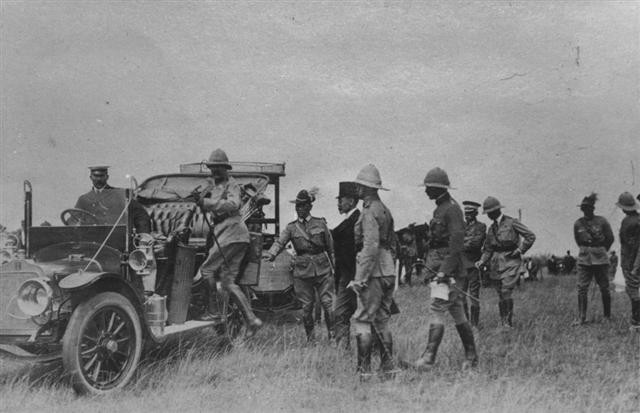
Lord Kitchener visiting Fort Lytton, Brisbane, 1910. Image number APE-039-01-0001.
- Fort Lytton. Since the defeat of the French at Waterloo (1815), Russia had been expanding her interests in the Pacific and Russia and Britain were in conflict over many issues. As a consequence there was a fear within the Australian colonies that if war broke out between Britain and Russia, then Russia would attack Britain's rich Pacific colonies. In 1877, distinguished naval officers Sir William Jervois and Colonel Peter Scratchle visited Australia as part of a survey of defences in the British colonies. It was they who recommended the construction of the Lytton fortifications which were constructed in 1880-81. In 1899, the government purchased all private land in the Lytton area as a “defence’ zone which hastened the areas decline as a viable township. Up to 1914 Lytton was the main training ground for the Queensland Defence Force. The first annual encampment at Lytton was held in 1881.
- World War Two – Lytton was considered a secondary defence position to the more modern batteries located on Moreton and Bribie Islands.
- with the entry of Japan into the war, an anti-submarine boom defence was constructed across the river.
- 1859 – Lytton was initially proposed as the future port of Brisbane and a signal station was constructed.
- 1859 – A quarantine station developed following the establishment of the pilot station.
- 1860 (15 May) – the first public auction of land was conducted. Farmers, graziers, grape growers and fishermen were amongst the early purchasers.
- 1876 – the Lytton area was listed as an Agricultural Settlement within the Parish of Tingalpa.
- 1882 – Lytton State School was opened.
- 1889 – the rail line bypassed Lytton, beginning a period of decline.
- 1911 – The Lytton State School was moved to Wynnum West.
- 1919 – The quarantine sStation was used during the influenza epidemic which followed the First World War.
- 1963 – Ampol oil refinery was constructed.
- 1988 – Fort Lytton national park was established.
Comments
Your email address will not be published.
We welcome relevant, respectful comments.